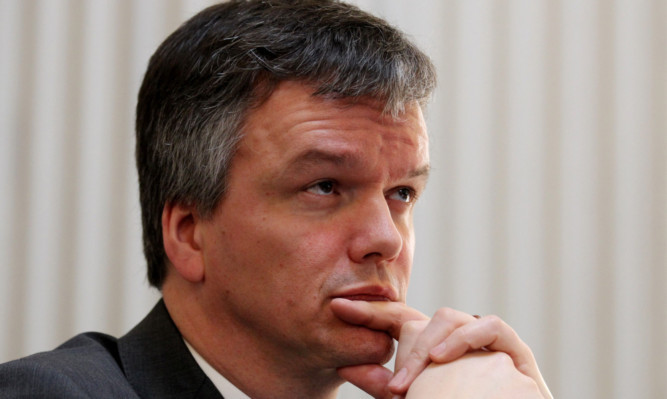
The boss of an emergency fund which offers compensation to customers of failed British banks has said an independent Scotland would not be covered by the scheme.
Mark Neale, chief executive of the UK’s Financial Services Compensation Scheme, said the deal could not be continued for bank customers north of the Border in the event of the separation.
Instead, a newly independent Scotland would have to set up its own version of the protection scheme, which is funded by banks and building societies but backed by the state.
EU laws state this would have to be for a minimum of £85,000 per customer but the Treasury has claimed this would be “difficult and expensive” for an independent Scotland. Mr Neale said an independent Scotland would have no choice but to abide by EU rules, which say states can’t share bank protection schemes. He said: “It is the case that member states of the EU are required to have their own deposit guarantee schemes. Applying that law, were Scotland to become independent and were it join the EU, Scotland would be required to have its own deposit protection arrangement within its own jurisdiction.”
He continued: “It is clearly an important issue to be addressed as part of the debate about independence and the document published last week opens up many of these issues for public discussion.”
Mr Neale also revealed that his organisation has had no discussions with the Scottish Government about the compensation scheme. The Treasury paper published on financial services and banking posed questions for individual savers.
The paper pointed out that a Scottish version of the £85,000 compensation scheme would be financed by a lot fewer firms and dominated by two big banks.
If either of the two big institutions failed, the report claimed, the other would have to bear almost the entire compensation bill. The Treasury also questioned how this could be achieved without support from the Scottish taxpayer given current Scottish bank deposits eligible for protection are worth more than 100% of the size of the economy.
The Treasury report also asked whether people in Scotland would continue to enjoy the same access to ISAs and raised concerns about the future of mortgage products, car insurance and pensions.
Michael Moore, the Scottish Secretary in the UK Government, said nothing had been ruled in or out.
But he said independence would effectively mean Scotland has turned its back on UK institutions.
“If we wanted to continue to share in the advantages, we’d have to negotiate our way back in,” he said, at the launch of the report on Monday.
A Scottish Government spokeswoman said: “An independent Scotland will have a deposit guarantee scheme not just because it is sensible, but because it is a requirement of EU law, and the full range of financial products will continue to be available in Scotland, whether it is insurance or ISAs.
“Scotland is less reliant on financial services than the rest of the UK, with only 8.3% of our GDP coming from financial services, compared with 9.6% of GDP for the UK.”
The “conveyor belt of doom”, which is the UK Government’s on-going analysis of indep-endence, rolled on last week with a new paper on the financial services sector. But at least the referendum battle is finally moving on to matters which everyone can relate to mortgages, savings and pensions. The Treasury paper raises many serious and forceful questions about the everyday financial services products we take for granted. SNP ministers had little in the way of a comeback, though we are promised more detail in the autumn.
However, the Treasury paper also highlighted an issue which is simmering away for the pro-union side. Because Better Together is fighting the change proposition, its arsenal naturally leads on the negative arguments.
But this has left its campaign a little lop-sided and they run the risk of ordinary punters becoming desensitised to the legitimate concerns it raises about the consequences of breaking up the UK.
With several more UK Government papers still forthcoming on issues such as pensions and defence, it might serve the interests of those fighting to save the Union to give people a break from the conveyor belt of doom and spend some time talking about the positive case for the UK.

Enjoy the convenience of having The Sunday Post delivered as a digital ePaper straight to your smartphone, tablet or computer.
Subscribe for only £5.49 a month and enjoy all the benefits of the printed paper as a digital replica.
Subscribe